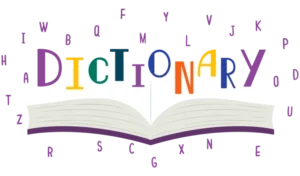Since Covid-19 has kept us homebound, I have found myself not wearing a watch anymore. There’s definitely a whole other blog we can devote to the changes in our fashion since working from home. But I think this is a great starting point and not to mention, educational!
Although I have been losing my vision for nearly two decades, accessibility wasn’t part of my daily vocabulary until the last couple of years when I helped launch LCI Tech, a digital equality practice that offers accessibility services so that people of all abilities can access websites and digital platforms.
In an effort to gain greater knowledge on the subject matter, I decided to take the International Association of Accessibility Professionals‘ Certified Professional in Accessibility Core Competencies exam. Preparing for the exam gave me a broader understanding and appreciation for accessibility beyond my ability to get information using a screen reader. One topic I was introduced to in my test prep, which I wasn’t aware of before, is Universal Design.
The seven Principles of Universal Design were developed in 1997 by a working group of architects, product designers, engineers and environmental design researchers, led by the late Ronald Mace, at my alma mater, North Carolina State University (Go Pack)! The purpose of the Principles is to guide the design of environments, products and communications.
The 7 Principles of Universal Design
- Equitable Use
- Flexibility in Use
- Simple and Intuitive Use
- Perceptible Information
- Tolerance for Error
- Low Physical Effort
- Size and Space for Approach and Use
One product I came across that illustrates each of these principles in one beautiful design is the Bradley Timepiece by Eone, whose mission is “Design for everyone.”

The Bradley is a tactile wristwatch that allows people to not only see what time it is, but to feel what time it is. Take a look at the video below of me demonstrating how I tell time.
Eone’s founder, Hyungsoo Kim, was a graduate student at MIT when he noticed that his friend and classmate couldn’t tell time — and it wasn’t just because he was blind. Too embarrassed to use his talking watch and interrupt the lecture, his friend would discreetly whisper to his sighted friend for the time.
Looking for better time telling alternatives for the visually impaired, Hyungsoo collaborated with designers and individuals with vision impairments to create a watch that everyone can use — sighted or blind.

Instead of traditional watch hands, time is indicated by two ball bearings — one indicating minutes (top), and one indicating hours (side).
These two ball bearings are connected with magnets to a quartz movement beneath the watch face. The magnets make it so that even if the ball bearings are moved when touched, they spring back to the correct time with a gentle shake of your wrist.
I bought the Bradley Element Watch after reading about it two years ago and instantly fell in love with it, even getting the Bradley Mesh 40m a few months later! The fact that I can now discretely tell time without having to reach for my phone is awesome. But what I love most about the watch is that people of all abilities can appreciate the sleek and modern design – not to mention, it’s a great conversation starter!
Update: It is going on two years now since I got my first Bradley watch, and I still love it! I constantly show it off during meetings to demonstrate to sighted people how accessibility can be sexy! I think there’s a misconception that if you make something accessible, it won’t look good, but that’s totally not the case.
I’d love to hear about any other products you think are sexy and accessible – there are several out there, so leave a comment or send us a note!
John Samuel, Chief Innovation Architect, LCI Tech





